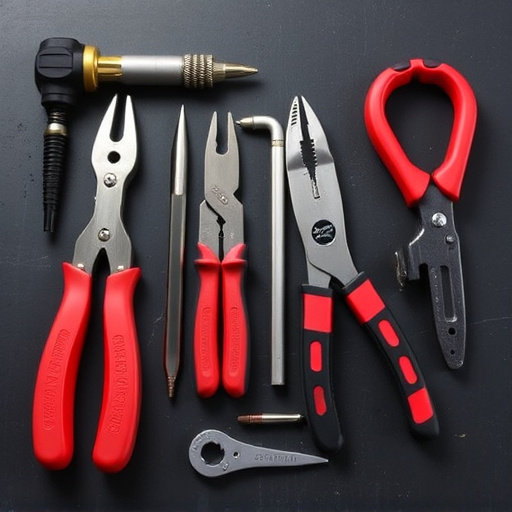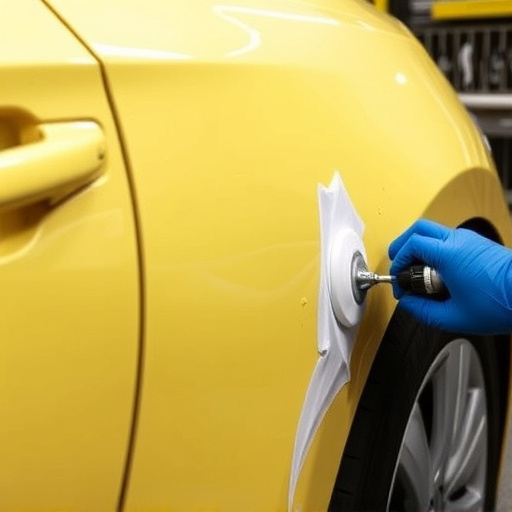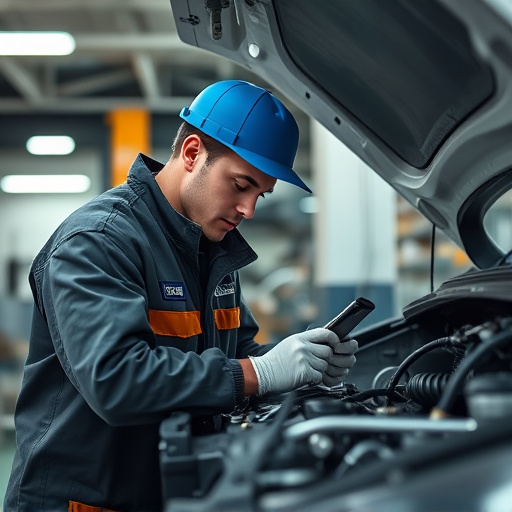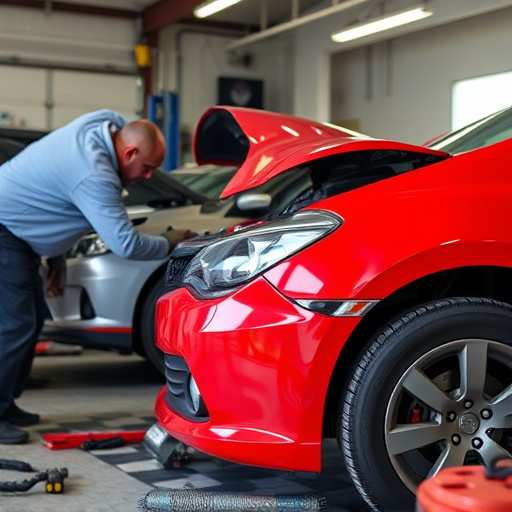Mercedes wheel alignment is vital for vehicle safety and performance, ensuring proper tire wear, enhanced handling, and improved fuel economy. Regular inspection and replacement of worn suspension bushings are crucial. Proper alignment involves adjusting camber, caster, and toe angles to manufacturer specs, preventing future issues like uneven tire wear or steering problems. Modern techniques offer cosmetic benefits, such as paintless dent repair.
Mercedes owners often wonder about the importance of wheel alignment, especially after replacing worn or damaged bushing components. This comprehensive guide delves into the essentials of Mercedes wheel alignment, explaining its fundamental role in vehicle stability and handling. By understanding how misalignment affects performance, you’ll learn to identify signs of worn bushings and appreciate the benefits of a proper realign for optimal driving experience and tire longevity.
- Understanding Mercedes Wheel Alignment Basics
- Identifying Worn or Replaced Bushings
- The Process of Realigning Wheels for Optimal Performance
Understanding Mercedes Wheel Alignment Basics

Mercedes wheel alignment is a critical component of vehicle maintenance that ensures your car or SUV steers straight and travels smoothly down the road. At its core, wheel alignment involves adjusting the angles of your wheels to match the manufacturer’s specifications, which promotes even tire wear and enhances overall performance. This process is particularly important when you’ve experienced worn or replaced bushings, as it helps counteract any uneven forces that can lead to excessive wear on new parts.
Understanding Mercedes wheel alignment basics involves grasping key terms like camber, caster, and toe. Camber refers to the angle of your wheels’ inner and outer edges relative to the centerline of the tire; positive camber allows for better cornering while negative camber improves stability at high speeds. Caster, on the other hand, is the angle between the top of the wheel and its mounting point, affecting steering responsiveness and stability. Toe alignment ensures parallel movement of wheels during straight-ahead travel, promoting even tire wear. If you’ve been in a fender bender or noticed signs of uneven tire wear (like a dent removal need), scheduling an auto repair near me to address Mercedes wheel alignment is crucial for optimal performance and safety.
Identifying Worn or Replaced Bushings

When it comes to Mercedes wheel alignment, identifying worn or replaced bushings is a crucial step. Over time, vehicle components like bushings can degrade due to constant use and exposure to varying road conditions. Look for signs of excessive wear, such as cracks, tears, or an abnormal amount of play in the suspension parts. If you suspect bushing damage, performing a visual inspection is the first step. Check for any visible deformities or discrepancies that might indicate replacement is necessary.
Regular auto maintenance includes keeping an eye on these components, as they play a vital role in ensuring your Mercedes handles smoothly and safely. Ignoring worn bushings can lead to more severe suspension issues, affecting not only the vehicle’s performance but also its structural integrity. Remember, prompt identification and replacement are key, and if needed, consider consulting a professional mechanic who can offer expert advice on whether a simple dent removal or more extensive auto body repairs are required.
The Process of Realigning Wheels for Optimal Performance

The process of realigning wheels is a critical step in ensuring your Mercedes performs at its best. It begins with thoroughly inspecting the suspension and steering components to identify any wear or damage, especially around bushing replacements. Technicians use advanced equipment to precisely measure and adjust the wheel’s alignment, ensuring each wheel is set at the correct angle for optimal contact with the road surface. This involves adjusting the camber, caster, and toe angles to mirror the vehicle manufacturer’s specifications.
Mercedes wheel alignment goes beyond basic functionality; it’s about maximizing safety and efficiency. Correct alignment improves handling, reduces tire wear, enhances braking performance, and can even contribute to better fuel economy. Moreover, it plays a significant role in preventing future issues like uneven tire wear, steering problems, or reduced stability, all of which are often costly to repair. This process is typically done with minimal disruption to the vehicle’s structure, and many modern methods offer benefits like paintless dent repair for cosmetic preservation, especially when combined with vehicle paint repair techniques, contributing to a restored car appearance without extensive body work, as seen in car restoration projects.
Mercedes wheel alignment is a crucial service for maintaining optimal vehicle performance and safety. By addressing worn or replaced bushings, you ensure that your car’s wheels are correctly aligned, leading to improved handling, increased tire life, and reduced wear on other suspension components. Regular alignment checks and adjustments can prevent costly repairs down the line, making it a smart investment in your Mercedes’ longevity.













